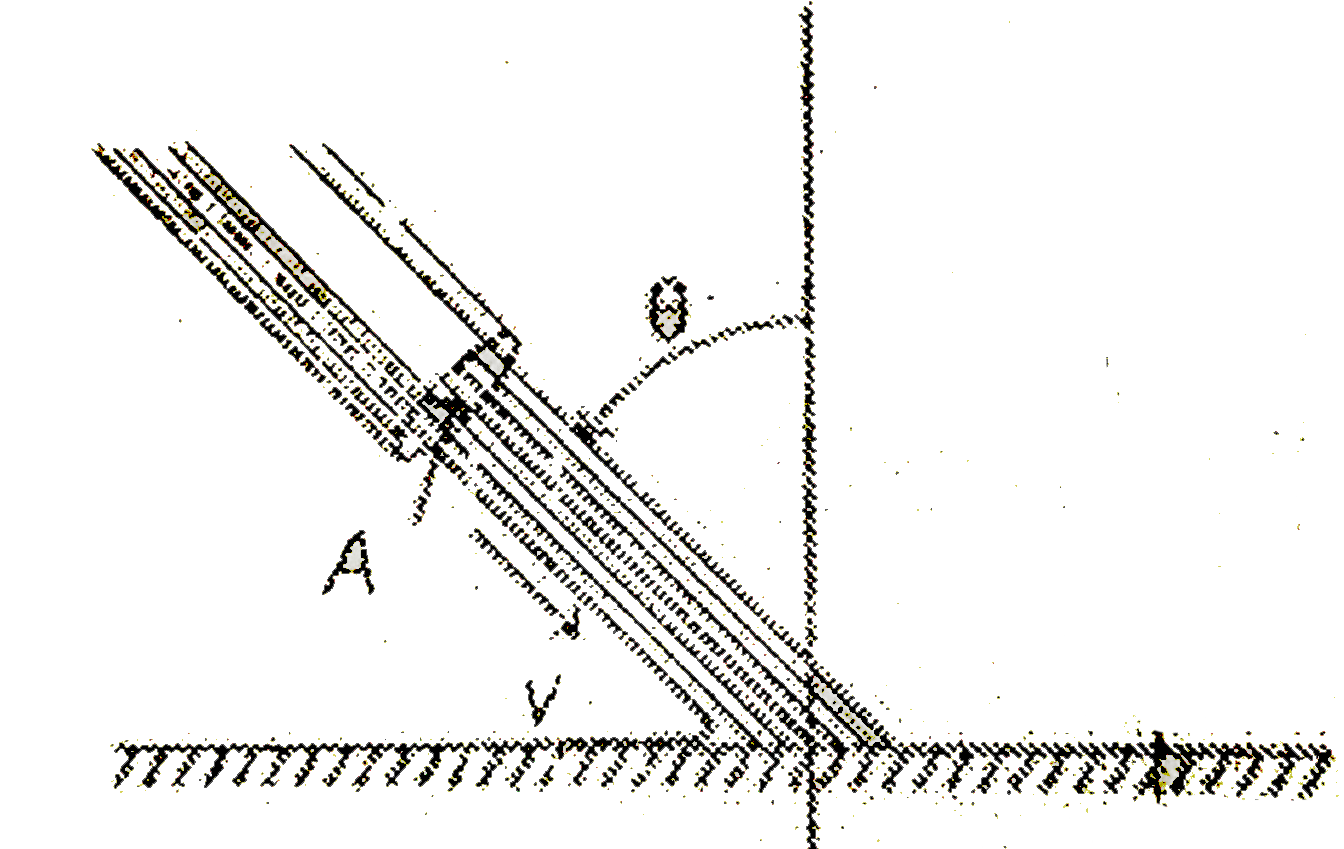Assume that a drop of liquid evaporates by decreases in its surface energy, so that its temperature remains unchanged. What should be the minimum radius of the drop for this to be possible? The surface tension is T, density of liquid is ρ and L is its latent heat of vaporization.
√TρL
TρL
2TρL
ρLT
The correct Answer is:C
To find the minimum radius of a drop of liquid that can evaporate by decreasing its surface energy while maintaining a constant temperature, we can follow these steps:
Step 1: Understand Surface Energy
The surface energy (ΔE) of a liquid drop can be expressed in terms of surface tension (T) and the change in area (ΔA):
ΔE=T⋅ΔA
Step 2: Relate Surface Energy to Latent Heat
When the drop evaporates, the change in surface energy is equal to the heat required for evaporation (Q), which can be expressed as:
Q=mL
where m is the mass of the liquid and L is the latent heat of vaporization.
Step 3: Express Mass in Terms of Volume
The mass m can be expressed in terms of the density (ρ) and volume (V):
m=ρ⋅V
For a spherical drop, the volume V is given by:
V=43πR3
Thus,
m=ρ⋅43πR3
Step 4: Calculate Change in Area
The change in area (ΔA) when the radius changes from R to R−ΔR is:
ΔA=Afinal−Ainitial=4π(R−ΔR)2−4πR2
Expanding this gives:
ΔA=4π(R2−2RΔR+ΔR2−R2)=−8πRΔR+4πΔR2
For small ΔR, we can neglect ΔR2:
ΔA≈−8πRΔR
Step 5: Set Up the Energy Balance Equation
Equating the change in surface energy to the heat required for evaporation:
T⋅(−8πRΔR)=ρ⋅43πR3⋅L
Step 6: Simplify the Equation
Cancelling π and rearranging gives:
−8TRΔR=43ρR3L
Dividing both sides by ΔR (assuming ΔR≠0):
−8TR=43ρR3L⋅1ΔR
Step 7: Solve for Minimum Radius
Rearranging gives:
R2=6TρL
Thus, the minimum radius R is:
R=√6TρL
Final Answer
The minimum radius of the drop for evaporation while maintaining constant temperature is:
R=√6TρL
The surface energy (ΔE) of a liquid drop can be expressed in terms of surface tension (T) and the change in area (ΔA):
ΔE=T⋅ΔA
When the drop evaporates, the change in surface energy is equal to the heat required for evaporation (Q), which can be expressed as:
Q=mL
where m is the mass of the liquid and L is the latent heat of vaporization.
The mass m can be expressed in terms of the density (ρ) and volume (V):
m=ρ⋅V
For a spherical drop, the volume V is given by:
V=43πR3
Thus,
m=ρ⋅43πR3
The change in area (ΔA) when the radius changes from R to R−ΔR is:
ΔA=Afinal−Ainitial=4π(R−ΔR)2−4πR2
Expanding this gives:
ΔA=4π(R2−2RΔR+ΔR2−R2)=−8πRΔR+4πΔR2
For small ΔR, we can neglect ΔR2:
ΔA≈−8πRΔR
Equating the change in surface energy to the heat required for evaporation:
T⋅(−8πRΔR)=ρ⋅43πR3⋅L
Cancelling π and rearranging gives:
−8TRΔR=43ρR3L
Dividing both sides by ΔR (assuming ΔR≠0):
−8TR=43ρR3L⋅1ΔR
Rearranging gives:
R2=6TρL
Thus, the minimum radius R is:
R=√6TρL
The minimum radius of the drop for evaporation while maintaining constant temperature is:
R=√6TρL
Topper's Solved these Questions
- BOOK - VMC MODULES ENGLISHCHAPTER - LIQUIDSEXERCISE - JEE ADVANCED (LEVEL -2)55videos
LIQUIDS
- BOOK - VMC MODULES ENGLISHCHAPTER - LIQUIDSEXERCISE - LEVEL -250videos
LIQUIDS
- BOOK - VMC MODULES ENGLISHCHAPTER - LAWS OF MOTION EXERCISE - IMPECCABLE53videos
LAWS OF MOTION
- BOOK - VMC MODULES ENGLISHCHAPTER - MAGNETIC EFFECTS OF CURRENT EXERCISE - JEE Advanced (Archive)78videos
MAGNETIC EFFECTS OF CURRENT
Similar Questions
If the temperature of a liquid is increased, then its surface tension
View SolutionAssume that a rain drop evaporates at a rate proportional to its surface area. Form a differential equation involving the rate of change of the radius of the rain drop.
View SolutionWhat should be the radius of a water drop so that the excess pressure inside it is 0.2 atm? Surface tension of water is 72×10−3N/m?
View SolutionOn heating a liquid, its surface tension
View SolutionIf a spherical rain drop evaporates at a rate proportional to its surface area. Form a differential equation indicating the rate of change of the radius of the rain drop.
View SolutionA spherical rain drop evaporates at a rate proportional to its surface area at any instant t. The differential equation giving the rate of change of the radius of the rain drop is _____
View SolutionA spherical rain drop evaporates at a rate proportional to its surface area at any instant t. The differential equation giving the rate of change of the radius of the rain drop is _____
View SolutionSpherical rain drop evaporates at a rate proportional to its surface area. The differential equation corresponding to the rate of change of the radius of the rain drop if the constant of proportionality is K>0 is
View SolutionA liquid of diameter D breaks up into 64 tiny drops. If the surface tension of the liquid is σ what is the change in energy?
View SolutionA stream of liquid, set at an angle θ, is directed against a plane surface (figure). The liquid, after hitting the surface, spreads over it. Find the pressure on the surface. The density of the liquid is ρ and its velocity is v.
 View Solution
View Solution

